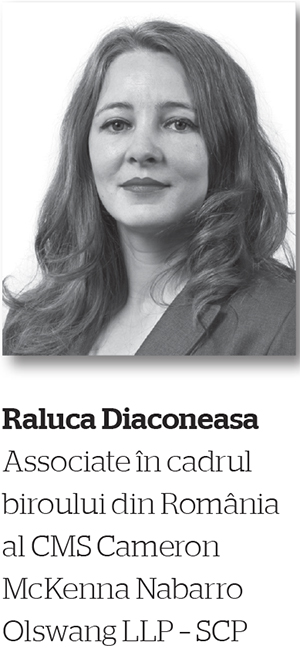According to the Integrated National Plan in the field of Energy and Climate Change 2021-2030 (NECP), submitted to the European Commission in April 2020, Romanian authorities are considering the implementation of several pilot and demonstration projects to promote the use of hydrogen in the production of electricity and the industrial sectors. To promote decarbonization and the adoption of these new technologies, there will need to be a consolidation of the legal framework, writes a report recently published by CMS. The document also mentions the necessary intensifying dedication to research and innovation, increasing and diversifying funding sources and developing educational resources, as well as supporting projects that promote the increased use of hydrogen.

Just recently, policy and government programmes included hydrogen among the resources meant to help both decarbonisation and energy security. In the Romanian NECP, “promoting the use of hydrogen” is mentioned as a way to achieve energy security. The Romanian Government has recently adopted a Memorandum initiated by the Ministry of European Funds and supported by the Ministry of Education and Research. The Memorandum proposes funding in the next programming period (2021-2027) for Romania’s first hub dedicated to hydrogen, for research and development in respect to the use of hydrogen in transportation, district heating and nuclear energy generation, as the “fuel of the future”.
An amendment was made to the Energy Law on 24 July 2020 to include hydrogen production provisions (“Law 155”). Under Law 155, the general regulatory framework on hydrogen will be established by the energy regulator, ANRE.
Operation ANRE will elaborate on the technical and commercial regulations regarding the operation of a hydrogen terminal and the methodology of related tariffs within six months from receiving an application to authorise the construction of the terminal. Tariffs for services provided by the hydrogen terminal operator, regarding the operation of the terminal (e.g. hydrogen storage facilities), are established by the economic operator concerned. These will be approved by ANRE and published on the operator’s web page.
At the end of 2020, ANRE published in the Official Gazette several orders outlining a legal framework for hydrogen projects: Order 200/2020 on the approval of the Framework Conditions for validity associated with the establishment authorisation for new hydrogen production installations; Order 201/2020 on the approval of the Framework Conditions for validity associated with the license for commercial operation of new hydrogen production facilities; and the 2020 Validity condition associated with the establishment authorisation for new hydrogen production facilities.
On the other hand, although Law 214/2020 provides a comprehensive programme for the development of smart grids at the national level, no specific reference to hydrogen infrastructure is included.

Connection and distribution According to Law 155, ANRE will need to establish the conditions and standards for the injection of hydrogen into existing natural gas networks. This will facilitate hydrogen blending into the gas grid and will need to be in line with the proposals awaited in the national hydrogen strategy.
Transport, import and export In March 2017, the National Policy Framework for Market Development Regarding Fuel Alternatives in the Transport Sector and the Installation of Relevant Infrastructure in Romania was established. The national legislation and policy framework do not include any specific number of hydrogen filling stations that are to be developed.
In Romania, no specific legal framework has been developed regarding the design, authorisation, construction, and operation of hydrogen filling stations. The policy on the installation of the infrastructure for the alternative fuels sets out the minimum requirements for the creation of alternative fuel infrastructure, including recharging points for electric vehicles and refuelling points for compressed or liquefied natural gas and hydrogen. It also outlines common techniques for recharging and refuelling points, as well as requirements for user information.

Law 34/2017 on the installation of infrastructure for alternative fuels lays down minimum requirements for the creation of alternative fuel infrastructure, including recharging points for electric vehicles and refuelling points for compressed natural gas, liquefied natural gas and hydrogen, to be implemented through national policy frameworks. It also proposes common technical specifications for such recharging and refuelling points, as well as user information requirements.
There is a discussion amongst decision-makers to reshape the existing energy legislation, and as such, it is expected that the legislation and rules supporting decarbonisation will be updated and simplified soon. At a national and local level, decision-makers should find appropriate ways to promote new technologies, such as hydrogen, to attract international as well as domestic investment. Increased awareness about the role of hydrogen has been promoted by government officials who also state that it is of paramount importance that Romania adopts a hydrogen national strategy.
On the financial side, the use of pricing tools to provide incentives for low-carbon transport will be useful in helping deploy hydrogen in the transport sector in Romania. This deployment can be achieved by encouraging the purchase of “green” road vehicles, the use of low-carbon fuels, and reducing the use of cars generally. Specific tools already implemented to achieve these objectives are represented in the application of tax reductions for green vehicles (e.g. hydrogen, methane, and electric vehicles).
Hydrogen-based projects may also be eligible for the Contract for Difference mechanism. This is currently being developed by the Ministry of Energy as a viable option for implementing a support scheme for the development of the new low-carbon generation sector in Romania.
—————————————-
This article first appeared in the printed edition of Energynomics Magazine, issued in December 2021.
In order to receive the printed or electronic issue of Energynomics Magazine, we encourage you to write us at office [at] energynomics.ro to include you in our distribution list. All previous editions are available HERE.
